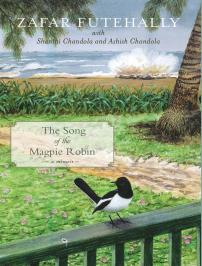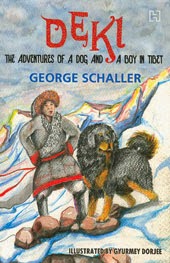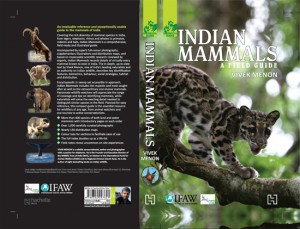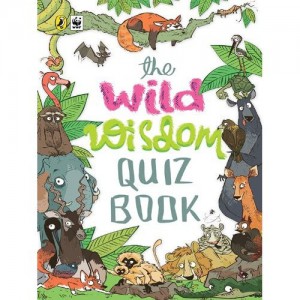Helen Macdonald, “H is for Hawk”
 The archaeology of grief is not ordered. ( p.199)
The archaeology of grief is not ordered. ( p.199)
Helen Macdonald’s H is for Hawk is about her relationship with her goshawk, Mabel. Grieving for the  sudden loss of her father, a well-known Fleet Street photographer, Helen Macdonald decides to buy a goshawk for eight hundred pounds sterling and train it — in the hope it will help her deal with her sadness. Her love for the bird stems from a lifelong passion for the wild birds of prey. As a child she scoured bookshops with her father to buy books on the subject. It is during one of those missions she came across T.H. White’s The Goshawk. With time and repeated readings, her understanding of the book and of the writer evolved too. Helen is an experienced falconer but never an austringer. Yet, she decided to buy Mabel and train her on the outskirts of Cambridge but as she discovers, “the wild is not a panacea for the human soul; too much in the air can corrode it to nothing.” ( p.218)
sudden loss of her father, a well-known Fleet Street photographer, Helen Macdonald decides to buy a goshawk for eight hundred pounds sterling and train it — in the hope it will help her deal with her sadness. Her love for the bird stems from a lifelong passion for the wild birds of prey. As a child she scoured bookshops with her father to buy books on the subject. It is during one of those missions she came across T.H. White’s The Goshawk. With time and repeated readings, her understanding of the book and of the writer evolved too. Helen is an experienced falconer but never an austringer. Yet, she decided to buy Mabel and train her on the outskirts of Cambridge but as she discovers, “the wild is not a panacea for the human soul; too much in the air can corrode it to nothing.” ( p.218)
According to her literary agency, Marsh Agency, Helen Macdonald is a writer, poet, illustrator, historian, and naturalist, and an affiliated research scholar at the Department of History and Philosophy of Science at the University of Cambridge, where she teaches to graduate level. Over the years she’s also worked as a Research Fellow at Jesus College, Cambridge, as a professional falconer, assisted with the management of raptor research and conservation projects across Eurasia, and bred hunting falcons for Arab royalty. She’s also sold paintings, worked as an antiquarian bookseller, organised academic conferences, shepherded a flock of fifty ewes and once attended an arms fair by mistake. Helen’s blog Fretmarks contains short essays on subjects as various as wild boar, Brighton, pop culture, World War II, golden orioles, solar eclipses, travels in Central Asia, falconry, and many of her experiences with Mabel. www.fretmarks.blogspot.com Helen can be found on twitter as @HelenJMacdonald. (http://www.marsh-agency.co.uk/authors/?id=3513)
 H is for Hawk is a beautiful meditation on nature, loneliness and mourning. The exquisite manner in which it is written, making extraordinary use of the English language is breathtaking. Helen Macdonald deservedly won the Samuel Johnson Prize for Non-Fiction 2014 and Costa Book of the Year 2014. Many reviewers have commended it for it being a memoir, albeit a misery memoir. For me, H is for Hawk, H is for T.H.White, H is for Helen, and H is for her father. If it is the only book you have time for this year, read it. It wont be time or money wasted. It will be an enriching experience.
H is for Hawk is a beautiful meditation on nature, loneliness and mourning. The exquisite manner in which it is written, making extraordinary use of the English language is breathtaking. Helen Macdonald deservedly won the Samuel Johnson Prize for Non-Fiction 2014 and Costa Book of the Year 2014. Many reviewers have commended it for it being a memoir, albeit a misery memoir. For me, H is for Hawk, H is for T.H.White, H is for Helen, and H is for her father. If it is the only book you have time for this year, read it. It wont be time or money wasted. It will be an enriching experience.
Read an extract from her book: http://www.telegraph.co.uk/culture/books/10989164/H-is-for-Hawk-Helen-Macdonalds-intense-relationship-with-her-goshawk-Mabel.html .
Some reviews
1. Janette Curie, “Grief and the goshawk” TLS, 29 Oct 2014 ( http://www.the-tls.co.uk/tls/public/article1476820.ece )
2. Kathryn Schulz, “Rapt: Grieving with your goshawk.” The New Yorker, 9 March 2015 ( http://www.newyorker.com/magazine/2015/03/09/rapt )
3. Nick Willoughby “You can’t tame grief”: Helen Macdonald on her bestselling memoir “H Is for Hawk” Salon, 10 March 2015 (http://www.salon.com/2015/03/09/you_can%E2%80%99t_tame_grief_helen_macdonald_on_her_bestselling_memoir_h_is_for_hawk/ )
4. Marck Cocker, “H is for Hawk by Helen Macdonald” The Guardian, 23 July 2014 ( http://www.theguardian.com/books/2014/jul/23/h-is-for-hawk-helen-macdonald-review )
A few notable meditations on Nature published in recent months:
1. George Monbiot ” Back to Nature” http://www.bbc.com/earth/bespoke/story/20141203-back-to-nature/index.html
2. George Macfarlane “The word-hoard: Robert Macfarlane on rewilding our language of landscape”, 27 February 2015 (http://www.theguardian.com/books/2015/feb/27/robert-macfarlane-word-hoard-rewilding-landscape?CMP=share_btn_fb )
3. Anand Vivek Taneja, ” A city without time: Anand Vivek Taneja remembers a dead river in a Delhi that has turned its back on it, just as it has on a language that was its own” March 2015 (http://indianquarterly.com/a-city-without-time/)
4. Ruskin Bond A Book of Simple Living Speaking Tiger Books, New Delhi, India. Hb. 2015
( Note: The images used in this blog post are off the internet, discovered using Google images. I do not hold the copyright to these photographs.)
Helen Macdonald H is for Hawk Vintage Books, an imprint of Penguin Random House, London, 2014. Pb. pp.300 £8.99




